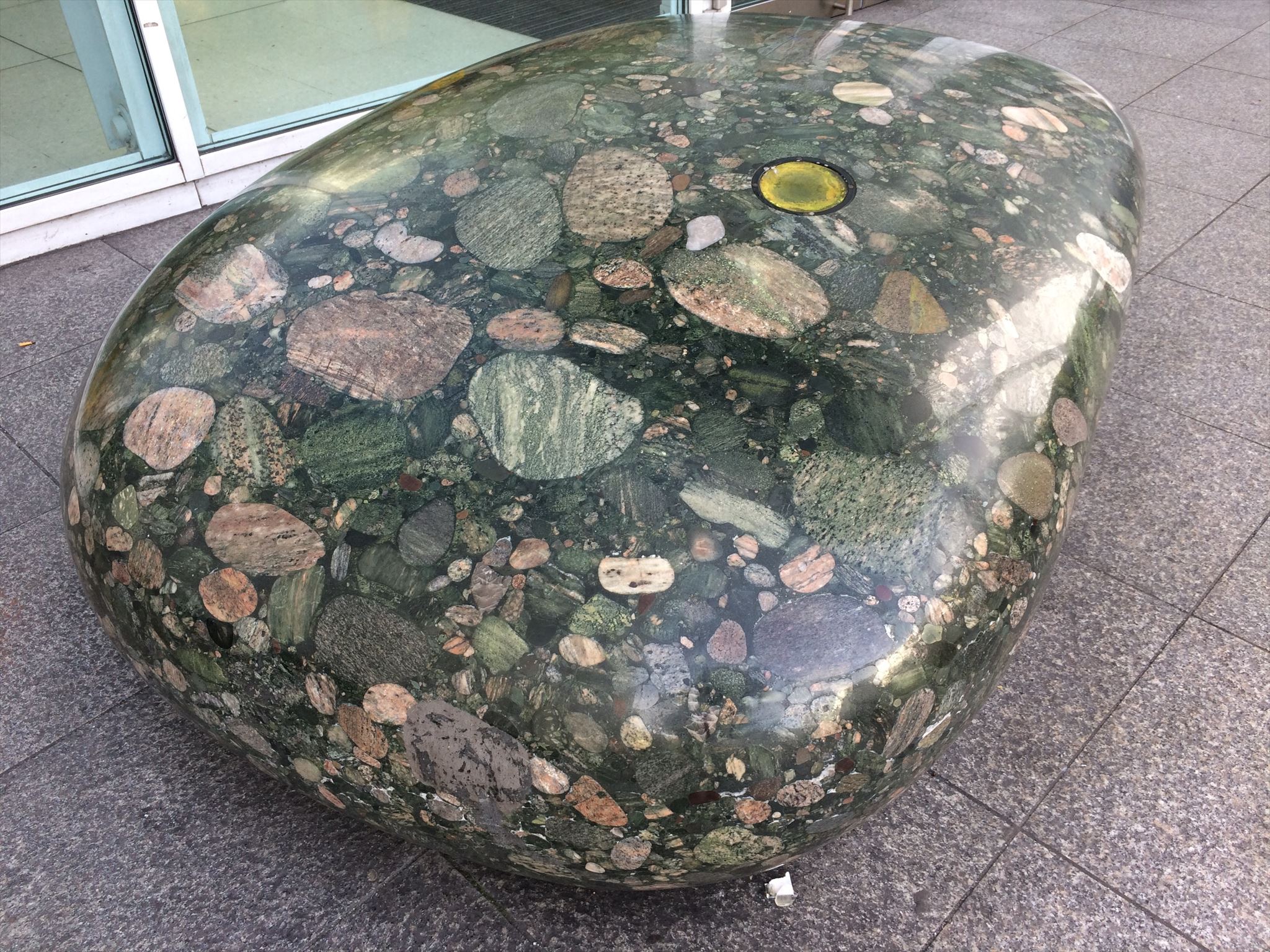
The artist says that the sculpture symbolises ‘the history and development of the hospital trust and its diverse parts fused into a cohesive whole’. It is made of a very beautiful, but very unusual, rock and its origin has puzzled geologists ever since it was unveiled. The geological history appears to be quite complex.
Most of the pieces within this giant pebble are themselves large pebbles. They are rounded pieces of mostly metamorphic rocks, many showing typical metamorphic banding of the minerals in the rock, known as foliation. This foliation looks quite different from the layering (bedding) that you see in sedimentary rocks, where the bedding is formed as slightly different layers of particles accumulate one on top of another. Foliation is irregular and is caused by recrystallisation of minerals under high temperature and pressure. In addition, the metamorphic rock pieces here are of quite a variety of types, with different colours and different types of foliation. So these must originally have been different types of sedimentary rock (or possibly igneous rock) that have been buried and subsequently metamorphosed, perhaps under different conditions.
Then it seems that those rocks must have been brought to the surface, broken up by weathering and formed into fairly rounded pebbles by being tumbled about, probably in a fast flowing river. Then, somehow, all these different sorts and different sizes of pebbles accumulated in one place, maybe on a river bed, and were then buried and cemented together by other material. This new sedimentary rock then underwent more changes, to produce the interesting material that we now see between the pebbles (called the matrix). Finally, earth movements brought this wonderful material near enough to the surface for a piece of it to be quarried in Bahia, Brazil, bought by a firm of stone contractors in Portugal and spotted by John Aiken, who had it shaped and polished into this spectacular sculpture.
To claim this Earthcache, send a message to the Brown Teddies, giving the answers to these questions. Do not answer them in your log. Logs without supporting answers may be deleted.
- There are three main rock types, igneous, sedimentary and metamorphic. Which two of these are the main components of the sculpture?
- Look carefully at the speckled matrix of the rock, in between the mostly rounded pebbles. Is it a) grey and black b) green and black or c) red and black?
- On the side of the rock that faces the windows, there is a large grey oval pebble (about 25 cm by 15 cm). Does the foliation in this piece now run a) horizontally or b) vertically?
- On the top of the rock, about 30 cm to the right (west) of the ’light’, is a small, completely plain and rather angular pebble, about 1.5 x 1 cm. Is that pebble a) black, b) red, c) pink, or d) green?
- Optional extra: Choose your favourite pebble within the sculpture and describe it, or post a photo of it in your log.